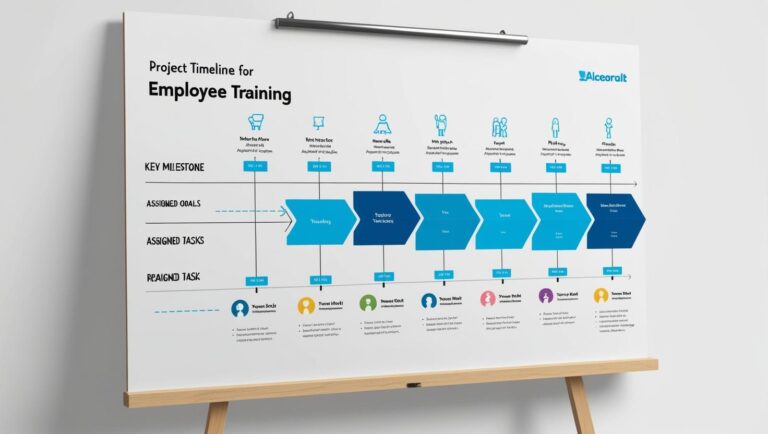Understanding How Your WSP/ATR is Evaluated — And How to Make Yours Stand Out
Submitting your Workplace Skills Plan (WSP) and Annual Training Report (ATR) can feel like a box-ticking exercise. You gather the data, complete the templates, attach the supporting documents, and send it off on time. Then you breathe a sigh of relief and hope for the best.
But what happens on the other side? What exactly does the SETA look for when evaluating your submission? Understanding their perspective isn’t just useful — it can be transformative. When you know how your WSP/ATR will be assessed, you can craft a submission that not only meets compliance requirements but positions your business as professional, proactive, and credible.
This article will walk you through the evaluation process, explain what SETA reviewers are really looking for, and provide practical strategies to make your submission stand out.
The WSP and ATR: More Than Just Forms
First, let’s clarify what the WSP and ATR actually represent. Think of them as your skills development report card, a reflection of both planning and execution.
The Workplace Skills Plan is your blueprint. It outlines what you intend to do in the year ahead: which skills you plan to develop, who will participate, and how the training will be delivered.
The Annual Training Report, on the other hand, documents what actually happened. Did employees complete the training you planned? Did it achieve the intended outcomes? The ATR closes the loop, showing SETA that your skills development efforts are real, measurable, and aligned with your business objectives.
Together, these reports demonstrate three things:
Your investment in people
Compliance with skills development levy obligations
Eligibility for grants and recognition
A submission that is strong on all three fronts doesn’t just satisfy regulatory requirements — it signals that your business takes workforce development seriously, creating a competitive edge for future growth.
What SETAs Are Really Evaluating
While every SETA may have slight variations in their review processes, there are consistent elements they look for in every WSP and ATR. Understanding these evaluation criteria is key to submitting smarter and increasing the likelihood of successful grant applications.
Completeness
One of the simplest ways a submission can fail is through technical incompleteness. Reviewers check that all required fields are filled in, that documents are signed and dated, and that supporting evidence files are uploaded correctly. Missing a signature, leaving a section blank, or misnaming a file can be enough to delay or even disqualify a submission.
To avoid these pitfalls, make sure you use the latest template from your SETA and keep a detailed checklist. Double-check SIC codes, SDL numbers, and any other identifiers. Remember, the submission process is not just about compliance; it’s about showing professionalism and attention to detail.
Internal Consistency
SETA reviewers look for logical alignment across your submission. They will compare your WSP against your ATR, checking that the planned training matches what was delivered. Training activities should clearly support stated business goals, and the data should make sense across sections.
For instance, if your WSP indicated training for five warehouse staff on inventory management, but the ATR shows only two people trained, you should be able to explain the discrepancy. Perhaps operational priorities changed mid-year, or new hires joined partway through. Clear, documented explanations build credibility and demonstrate intentionality.
Consistency also extends to the qualitative side. Your training outcomes should align with your business objectives, whether improving productivity, enhancing customer service, or reducing operational errors. A submission that reads as random or disconnected raises questions about whether the training has practical value.
Relevance
SETA reviewers assess whether your training is directly relevant to your business operations. Random courses that don’t align with job roles or industry needs are unlikely to impress.
Relevance isn’t just about technical training. Soft skills and informal learning also count, provided you can demonstrate their impact. For example, a conflict resolution workshop for team leaders isn’t just a “nice-to-have.” If your team struggles with internal communication, documenting improved collaboration as an outcome strengthens your submission.
Where possible, tie training to job titles, unit standards, and performance outcomes. Even informal or on-the-job learning can be valid if you clearly show its purpose and effect. This approach transforms a compliance exercise into strategic skills development.
Growth and Progress
SETA reviewers are interested in whether your business is developing people over time. Are there new learning opportunities each year? Are you showing improvement in your approach to skills development?
Submitting the same WSP year after year without change signals stagnation. Even small innovations, such as introducing a mentorship program or internal coaching sessions, demonstrate that your business is thinking proactively about workforce development.
Intentional growth also reflects your commitment to continuous improvement, which SETAs see as a sign that training is being taken seriously and embedded into your organisational culture.
Opportunity for Funding Support
A strong submission can open doors to discretionary grants. SETAs assess whether your WSP/ATR identifies real skills gaps, addresses business needs, and demonstrates a commitment to implementation.
Simply listing courses isn’t enough. You need to highlight why each training initiative matters, how it aligns with operational priorities, and how your business is prepared to deliver it effectively. This clarity not only supports grant eligibility but also positions your organisation as strategic, proactive, and capable.
Making Your WSP/ATR Stand Out
Now that you understand the evaluation criteria, the next step is to differentiate your submission. A great WSP/ATR is more than accurate; it tells a compelling story about your business, its people, and its growth trajectory.
The key to standing out lies in three areas: narrative, alignment, and documentation.
Your Data Tells a Story
Don’t treat your WSP/ATR as a dry, administrative task. Use every opportunity to explain what you’re doing and why. Many templates provide comment sections — use them. Add context about why a particular training initiative was chosen, what challenges it addresses, and what outcomes you expect.
For example, rather than simply listing “Time Management Workshop – 5 employees,” you could elaborate: “Workshop implemented to reduce processing delays in the order fulfilment team, resulting in improved turnaround time and customer satisfaction.” This makes the submission more meaningful and shows SETA reviewers that training is purposeful.
Training Aligns to Real Business Goals
SETA reviewers are not just checking boxes; they want to fund initiatives that genuinely improve business performance. Submissions that tie training to measurable objectives — productivity, quality, efficiency, compliance, or customer experience — demonstrate impact.
For instance, a small logistics business might plan training in digital inventory management. The ATR could highlight outcomes such as a 20% reduction in stock errors or faster dispatch times. This not only satisfies reporting requirements but also showcases operational improvement.
Clear and Professional Documentation
Messy submissions are difficult to process and may reflect poorly on your organisation. Simple steps like consistent file naming, labelled evidence, and clearly organised folders can make a significant difference.
Include supporting documentation such as attendance registers, screenshots of completed e-learning modules, photos of workshops, feedback forms, or certificates. Even small, informal initiatives like peer coaching can be documented with a short log and participant reflection.
Professional documentation reinforces credibility, streamlines the review process, and ensures your efforts are recognised.
Practical Examples: Turning Compliance into Strategy
Consider a small 15-person manufacturing company. Last year, their WSP included mandatory safety training and a technical course on machine calibration. While compliant, the ATR showed minimal impact — and the SETA reviewer flagged that the training wasn’t clearly linked to business outcomes.
This year, the company revised its WSP by conducting a skills audit first. They identified a recurring problem: mislabelled products causing customer complaints. Their training plan now included targeted sessions on quality control, process documentation, and peer-led workshops.
In the ATR, they documented improvements, including a 30% reduction in errors and positive customer feedback. The SETA reviewer saw not just compliance but intentional skills development aligned with operational needs. The result? A stronger rating and potential eligibility for discretionary grant funding.
Small adjustments like this — connecting training to real challenges, tracking outcomes, and providing context — make submissions far more impactful.
Avoiding Common Pitfalls
Even experienced SDFs sometimes fall into traps that weaken their submissions. Common mistakes include:
Submitting incomplete templates without cross-checking for signatures, SIC codes, or evidence attachments.
Copying last year’s WSP without adjusting for new business priorities.
Listing training activities that are irrelevant to job roles or industry needs.
Failing to document informal or on-the-job learning.
Ignoring the link between training and measurable outcomes.
Avoiding these pitfalls ensures your submission isn’t just compliant but meaningful and credible.
Final Thoughts: Your Submission Is Your Story
Remember, the SETA reviewer doesn’t live in your business. They don’t know your operational challenges, your team dynamics, or your strategic goals. Your WSP/ATR is your chance to communicate that story.
A strong submission shows that your business is committed to developing its people, addressing real skills gaps, and improving performance. It’s not just about meeting compliance requirements — it’s about demonstrating professionalism, strategic thinking, and a proactive approach to workforce development.
Think of your submission as a narrative that conveys three messages:
Your business invests in its people.
You’re organized and intentional in your approach to skills development.
Your training initiatives have real, measurable impact.
By focusing on these elements, your WSP/ATR can stand out, unlock funding opportunities, and build your credibility with both the SETA and your own leadership team.
Skills development in small businesses is more than a formality. Done right, it strengthens your team, drives operational improvement, and positions your business for sustainable growth. When you submit with clarity, intentionality, and strong documentation, you’re not just complying — you’re telling a compelling story about your business and its commitment to people.



